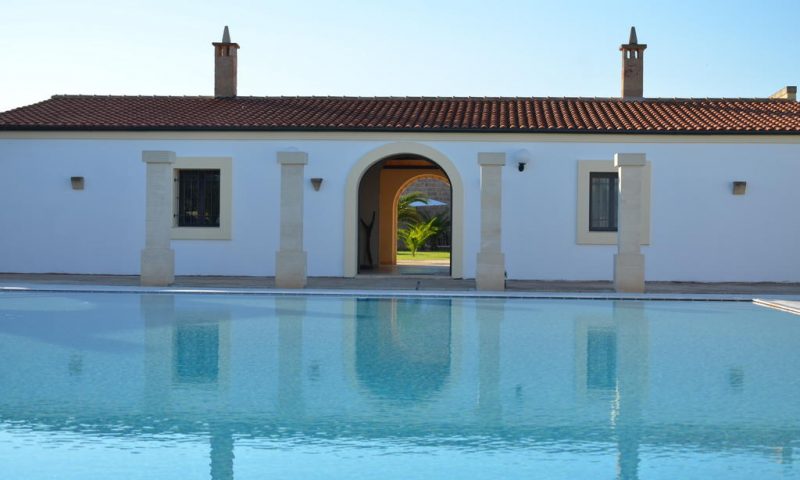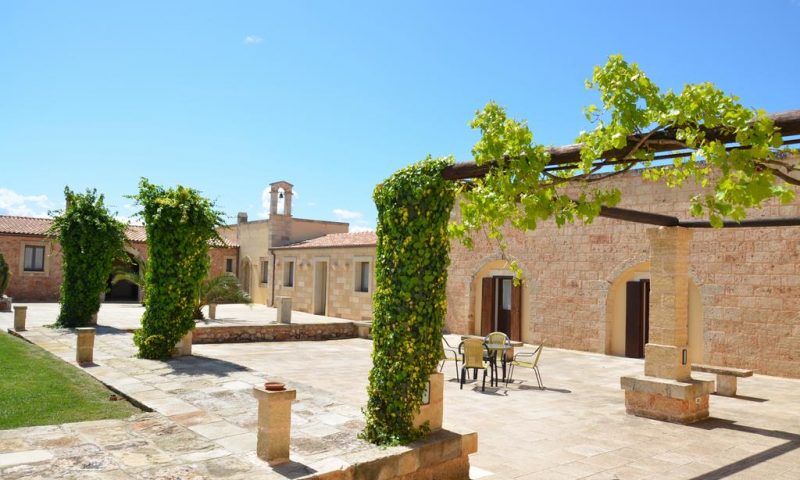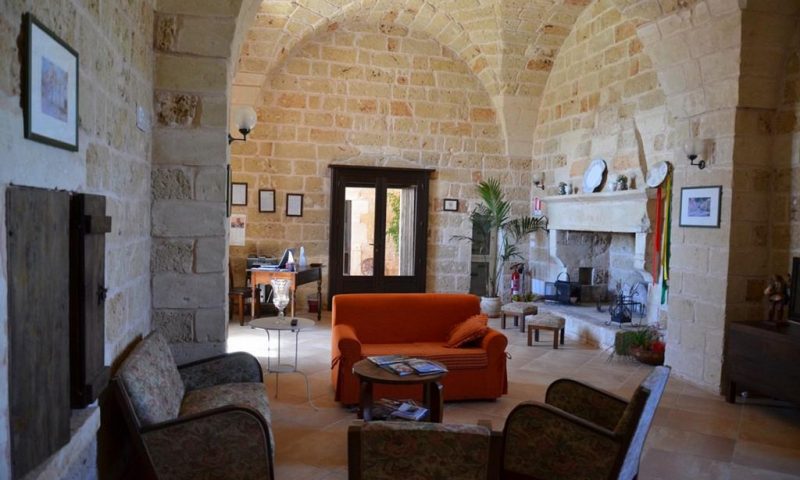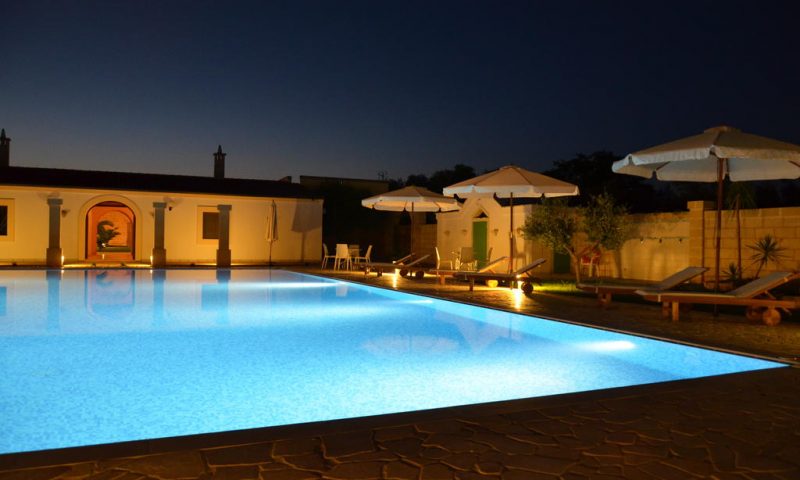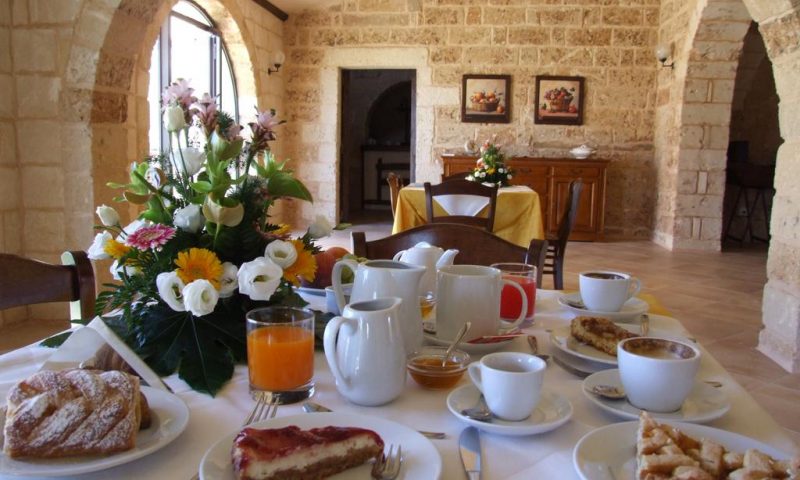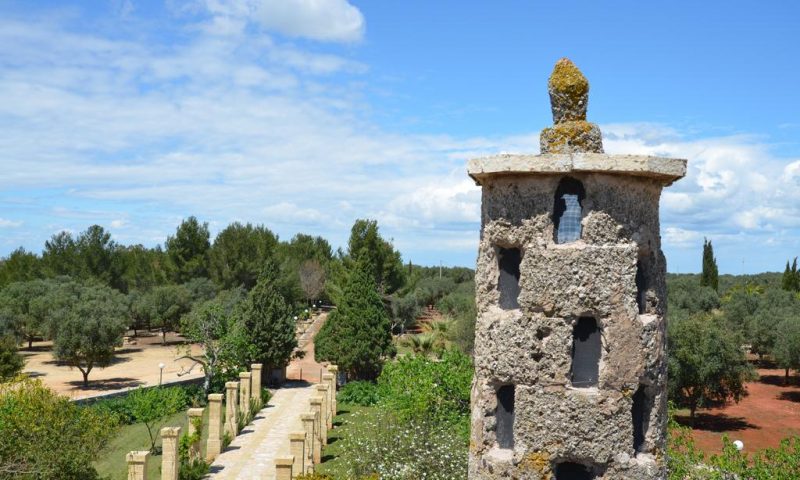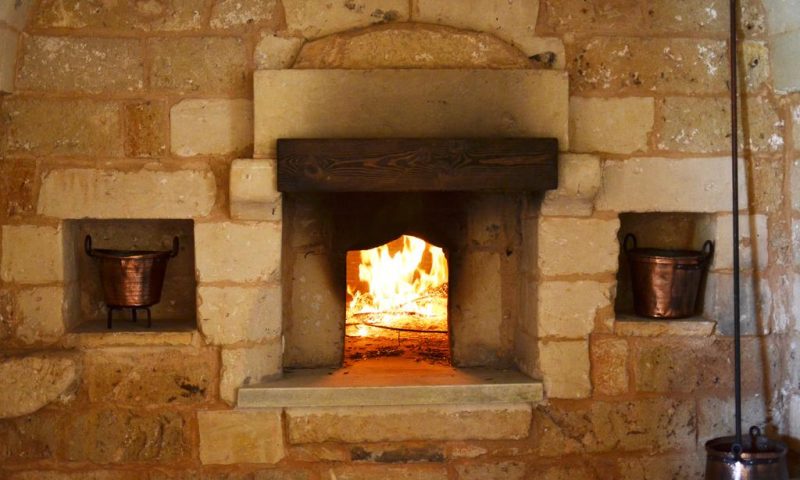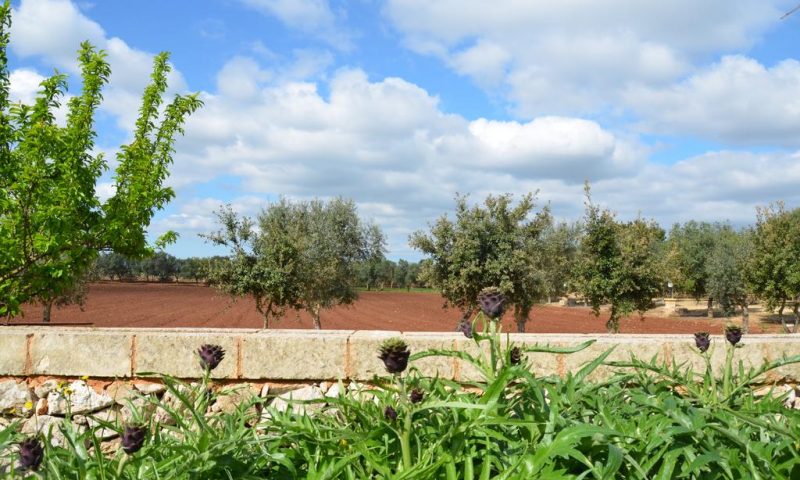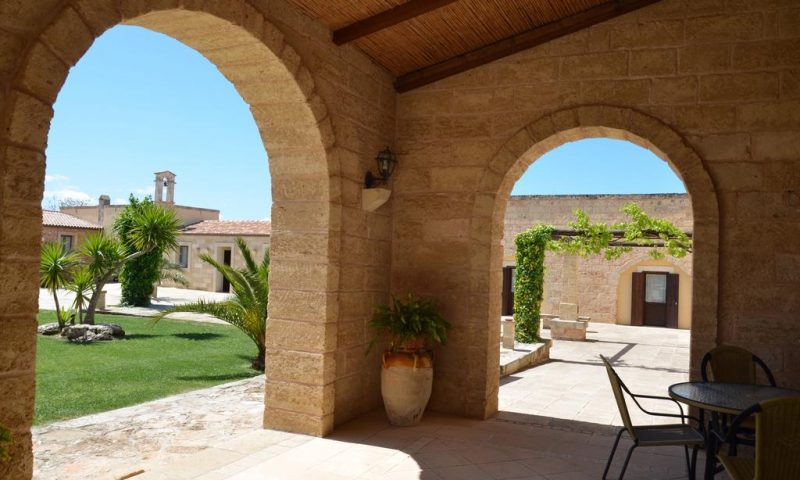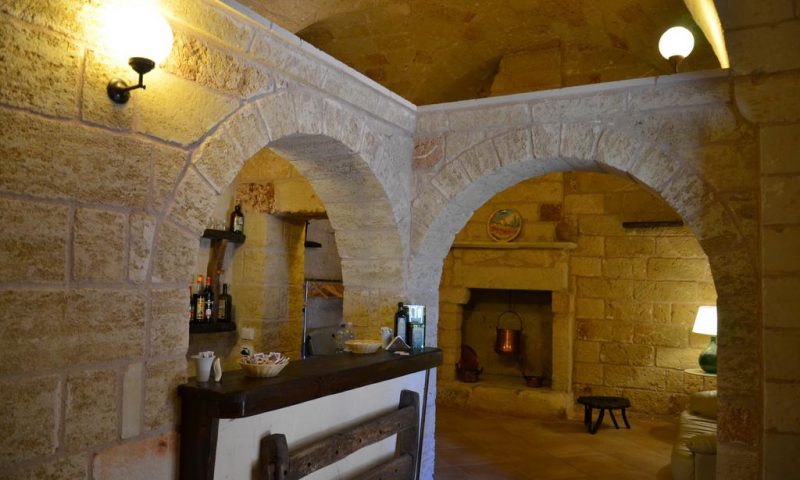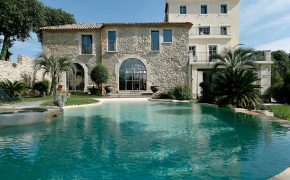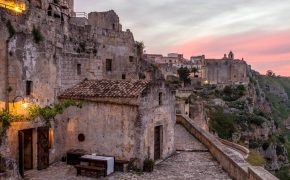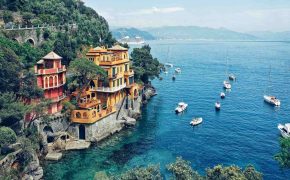When you pass through the gates of the Tenuta Masseria Chicco Rizzo, the atmosphere of the past involves you in a very special experience: the deafening noise of your everyday life is transformed into silence, and… everything has the right time.
The colours of nature and places are food for our minds. The “masseria” nucleus is surrounded by 18 hectares of land: some planted with olive groves, some with vegetable gardens and some with fruit trees. All of them cultivated biologically and the air is pervaded by the smells of the land and its genuine products.
The sheer pleasure of getting back in touch with nature and being able to taste some delicacies will bring back memories of unique sensations. The gentle rustle of the leaves, the murmur of the wind mixed with the birdsong and the warmth of the sun will make your stay an unforgettable experience. This is a green-holiday
As you savour our genuine food, prepared skilfully using traditional recipes, you will rediscover the taste of the ancient flavors … when you stay here pleasure involves all your senses.
THE HISTORY
The Tenuta Masseria Chicco Rizzo is located in the heart of Salento close to Lecce and Otranto, in an area known as the “Grecia Salentina” whose inhabitants still speak Griko, an ancient language descended from Ionian Greek.
The masseria started life in the eighteenth century as a horse-station for mail, where stagecoaches could change their horses. It was linked to the Roca Vecchia -Naunia road which connected the Traiana-Calabra to the Sallentina.
These roads were linked to important ports such as that of Otranto and Gallipoli. In these ports the ships took on their loads the “lampante oil” that was exported to switch on the oil-lamps of most important cities of Europian royal courts.
Later the masseria was transformed into the nerve centre of a large estate, or latifondo, belonging to local landowners and was managed by factors (massari) who worked in “sharecropping”. Thus It became the Masseria Chiccu Rizzu.
The name comes from a type of wrinkled (raggrinzito in Italian) wheat: in the local dialect, chiccu is the grain of wheat and rizzu describes its wrinkled appearance.
At the beginning of the XX century, the structure acquired a new massaro: Vincenzo Carcagnì. He had six children, one of whom was Antonio who was born on the farm in 1918. Antonio (known as Ntonucciu) married Celeste and together they bought the masseria.
They transformed it into a farming business whose main crops were tobacco, wheat and others cereals. They also raised cattle and horses and produced an excellent cheese. In the last ten years, the Masseria Chiccu Rizzu has been renovated magnificently and transformed into an agritourism structure. In addition, more than 4,000 olive trees have been planted in the 18 hectares of land around it.
As a result, the masseria has now become the Tenuta Masseria Chicco Rizzo, restored to its original splendour by its current owners Donato and Ada Carcagnì, son and daughter of Antonio and Celeste.
THE MASSERIA
For your holidays in Salento…Tenuta Masseria Chicco Rizzo to discover the ancient pleasure of being in contact with nature. When you get into Tenuta Masseria Chicco Rizzo, the fascination of the past involves you in a particular experience.
Outliving time and the passing of the seasons, the farm has maintained the charm of its architectural simplicity, which blends harmoniously with the rural landscape around it.
The recent restructure work allows today to admire the fine processing of the tuff stone vaults, which arch upwards from the Lecce stone pillars that bear their weight in the architectural device typical of the starred -vaults of the Salento. The masseria is built around three courtyards: the front one, the inner and the rear courtyards.
In the central part of the old masseria, in addition to the reception, where a huge wall fireplace can also be admired, there is also an attractive bar and a spacious restaurant, whose central hall still houses an old XVIII wood oven.
The spacious conference room obtained from the old granary and the “pajera” (barn), currently houses a permanent exhibition of local painters and a small library open to the masseria’s guests. The masseria offers its guests the great comfort of 18 beautifully furnished rooms which all take access from the splendid inner courtyard.
This allows you, after pass through an attractive space roofed over with a cover known as cannizzu, to reach also the rear courtyard and admire the beautiful pool shielded from the wind by a fine structure made of tufa stone and by olive trees all around.
THE ESTATE
The 18 hectares that surround the Tenuta Masseria Chicco Rizzo are now home to more than 4,000 olive trees and a variety of fruit trees. The farm’s main focus is on cultivating olives and producing an excellent extra virgin olive oil that has been identified by Slow Food as one of Italy’s finest.
It should be noted that the majority of the products we use in our restaurant come straight from our own vegetable garden and from the trees on the estate, which are all biological cultivations. Another feature of this farm is the set of aloe greenhouse, visible in the distance as they stand tall above the olive trees.
The estate is a member of the “didactic masserie” group, which is committed to passing its accumulated knowledge on by using educational itineraries. As the estate’s owners are medical doctors, they are in favour of correct practices of nutrition.
Working through the Centro Cuore Carcagnì, owned by the same family and with which the estate is connected, a series of training events are planned about the Mediterranean diet and other health-related issues.
One of the aims of Tenuta Masseria Chicco Rizzo is to raise awareness about the importance of biodiversity and of genuine foods. To do this, we organise also guided tours in our farm to provide you with information about our various products, that you can pick up straight off the trees.
During harvesting times, we organise days when you can come and have fun harvesting olives and spending a day in close contact with nature. A visit to the farm can also be extended to take in a viewing of the traditional and modern techniques of harvesting and further visits to the nearby “hypogeum oil-mills”.
THE SWIMMING POOL
The swimming pool area was devised and designed to provide an inviolable oasis of peace and quiet, located in the rear courtyard. The rustic flavour of the arched perimeter wall blends in simple, spontaneous harmony with the enormous swimming pool built especially for our guests, against a backdrop of the foliage of olive trees that shimmer in the sunlight.
The rural atmosphere, the vegetation, the stonework in the setting and the colour scheme make this area an enchanting place to linger.
Whether you choose to sit under a beach umbrella or in the shade of a reed roof, you can spend hours reading a good book: if you don’t have one with you, you can choose one from the masseria’s library. Or you just can relax at the poolside, sipping a glass of good wine or a cocktail prepared with skill at our bar.
If you want to linger in the masseria all day long and benefit from its magical atmosphere, you will inevitably spend some time by the pool, making the most of the chance to relax in the warm sunshine and enjoy the clear light blue colour of the pool.
ROOMS & SUITES
Eighteen rooms finely furnished and with all the comforts are at guests’ disposal. Each room has distinctive features and furnishings made by local artisans. In the structure there is also a room for disabled guests. From every room it is possible to admire the nature and the landscape of the estate. All rooms are on the ground floor and take access from the central courtyard, where there are suggestive spaces available to guests.
CASA DEL MASSARO
The “Casa del Massaro” room is located in the area of the old stables of the masseria. The room is large about 50 square meters and is part of the historic rooms. The room is embellished by a beautiful fireplace and by the starred-vaults of the Salento. Equipped with all the comforts and furnishings made by local artisans , the “Casa del Massaro” is ideal for a romantic night.
Also this room is located on the ground floor and take access to the inner-courtyar. Two-rooms apartments include rooms with separate spaces in two bedrooms and are equipped with double beds and two single beds.
All rooms have comfort and furnishings made by local artisans ideal for a family of 4 or a group of friends. They are located on the ground floor and take access to the inner-courtyar. From every room it is possible to admire the nature and the landscape of the Estate.
DINING
The restaurant offers a gastronomic experience that focuses on the healthy cuisine of the Mediterranean diet, where the flavour of recipes typical of the Salento is enhanced by the freshness of ingredients produced by the masseria itself or in its immediate surroundings. Here you can savour dishes like “beans with chicory”, “eggs with leaks” and other specialities of local farming traditions.
People all over the world appreciate the cuisine of the Salento for its great variety and rich choice. One important point here is that the products we use come straight from our own kitchen gardens and the various fruit trees on the estate and all of them are cultivated biologically.
It should be noted that the structure is connected to the “Carcagnì Heart Center”, owned by the same family, which allows a careful analysis of the health content of the dishes proposed.
SALENTO
The Masseria is situated in the heart of Salento and in the Grecìa Salentina in particular. In Sternatia as in all the countries of grika origin, traces of the Greek-Byzantine influence can be found in the toponymy, in the surnames, in the architectural structures of the houses, in short, everything speaks also griko men in the square standing “in mantagnata”.
The land of Apulia is a region where the sea, art, culture, tradition and spirituality fuse together in a variegated, poetic blend. The National Geographic has described Apulia in general, and the Salento in particular, as one of the best destinations in the world, one that everyone should see at least once.
Apulia is a unique land where the crystalline sea and its mild year-round climate provide the setting for beautiful landscapes, ancient local traditions that are still related to the old rural way of doing things and the healthy foods of the Mediterranean diet.
The Tenuta Masseria Chicco Rizzo guarantees a different approach to your holiday, one that is rooted intimately in its native land. We offer you itineraries that will take you to visit the history of our area with guided tours to ensure that you get the best from your holiday in the Salento.
Located south of Lecce, in the heart of the Salento, the estate occupies a strategic position for tourists and others passing through who want to get to know places that have long been the custodians of crypts, monuments, churches, palaces and works of art of inestimable value.
The splendid coasts of the Adriatic Sea, the Otranto Channel and the Ionian Sea, with the Baroque architecture of Lecce and the phenomenon of “Tarantism and the Night of the Taranta” are among the excellent ingredients that go to make up the Salento brand that is now known all over the world.
Less well-known, although it is certainly noticed and appreciated by tourists, is the kind and friendly nature of the locals in this southern area of the Salento, whose population has developed this approach as an inheritance of thousands of years of the more or less peaceful invasions of peoples coming from the shores of the Adriatic.
These influences have made the area into a rich mosaic of arts and cultures that now make it stand out as a rather special place, just as a holiday.
GREEN TOURISM
Maybe the most important ingredient in a “green” holiday is the chance to go hiking and biking in natural surroundings. The Tenuta Masseria Chicco Rizzo offers beautiful itineraries for visitors who love the Salento’s beautiful landscapes and want to discover them for themselves.
The paths on the farm’s own lands lead to the aloe greenhouses, the starting point for several longer paths that lead to the villages of Martignano, Sternatia, Zollino and Martano. Enjoy the bliss of losing track of time as you take long walks in nature among the olive trees and pinewoods, the regular rows of the kitchen gardens and the fruit orchards on the estate’s 18 hectares of land.
As you wander along the paths laid out around the estate, you will be able to get an intense, direct sense of the authentic rural flavour that is such a salient feature of the Salento. Making your way through nature, passing over the red soils typical of this area, you can admire several traditional drystone pagliari constructions.
Our paths were chosen carefully to take you to places you would never otherwise have been able discover, such as the archaeological site of Apigliano, between Martano and Zollino.
Starting out from the estate, an easy walk will take you to the historical settlements of all the villages in the Greece of Salento, where you can admire many beautiful portals and the balconies whose rich decorations make good use of the particular properties of local Lecce stone.
WORKSHOP OF MUSIC & DANCES
In the magnificent setting of the conference room, at one time the estate’s old hay barn, you can attend an experience that will teach you all you need to know about the theory and practice of popular music and dance from the Salento.
You can learn to play the “tamburello” and the steps of the dance known as the pizzica. Originally developed as a way of curing the unfortunates who had been bitten by a tarantula and later evolving into a dance used during courtship, it has since conquered the world.
When the music you learn to dance with is from the Salento… you are guaranteed to enjoy yourself. The experience is completed by a test that doubles as a party, where you practise what you have learned and everyone has a great time!
RURAL ARCHITECTURE
The aim of this workshop is to teach participants about the architectural structures and ancillary works of civil engineering functional to the estate’s agricultural operations, that can be admired in the masseria and in the surrounding territory.
During your guided tour, you will discover the buildings and their typical characteristics (vaulted ceilings, fireplaces and the bread oven), but also the outdoor spaces organised and enclosed within drystone walls.
Watching a documentary about the use made of local Lecce stone, you can focus on an analysis of how the typical starred-vaults of the Salento in tufa stone were constructed. Thus you will embark on a journey back into the history of the Salento.
THE BEACHES
“Lu mare, lu sule e lu ientu”…the sea, the sun and the wind, The Peninsula of Salento is bathed by the Adriatic Sea and the Ionian Sea. It’s the sea that first attracts so many tourists to the Salento.
The crystalline clarity of its waters, its beaches of finest sand nestling between rocky cliffs and the beauty of many of the settlements along its coastlines have made this land a very popular destination for the whole world.
Since the Tenuta Masseria Chicco Rizzo is located in the very heart of the peninsula, it is the ideal starting point for beach goers to reach our many beautiful bathing spots. Another advantage of being placed in the centre of the peninsula is that our guests can always choose to head on any day for a coast that is out of the wind.
Because it juts out into the seas, the sunny Salento peninsula can often be quite windy and sits right in the path of the scirocco, which blows up hot and damp from the south-east, and of the tramontana that blows down cool from the north… hence the expression “lu mare, lu sule e lu ientu” (the sea, the sun and the wind).
Closer to the Adriatic Sea and to the Marinas of Melendugno it only takes 10 to 15 minutes in the car to reach Roca Vecchia, where you can dive from the old town walls that stand tall above the sea.
Or you may choose the enchanting rocks of Sant’Andrea with its evocative arches, the “Poesia” chosen by the National Geographic as one of the world’s most beautiful natural swimming pools, or the stupendous beaches at Torre dell’Orso and Alimini.
In only 15 to 20 minutes, you can also reach the sheer cliffs of Otranto and of Santa Cesaria, or the lower ones at Porto Badisco, the sheltered waters of Baia dei Turchi, Castro or the Ciolo, all of them transparent and crystalline.
It takes a little longer – about 20 to 30 minutes – to reach the great expanses of white sands of the beaches at Punta Prosciutto, the ones at Ugento known as the Salento Maldives, at Santa Maria di Leuca and at Gallipoli. Last but not least, make sure you don’t miss out on the wild and untamed landscape at Porto Selvaggio.
VILLAS & VILLAGES OF SALENTO
After a traditional day spent on the beach by the breathtaking waters of the Ionian or the Adriatic, the afternoon calls for a rest, lulled by the song of the cicadas.
But if you don’t want to waste the precious hours of the holiday, the ideal solution might be to go for an unusual walk of discovery of the wonderful stately villas completely surrounded by vegetation that stand along some of the most beautiful and interesting stretches of the Salento coastline.
There are a great many examples in this area of rural architecture that evolved from functional simplicity to increasingly articulated and imposing structures as the nineteenth century gave way to the twentieth.
On the Ionian coast, the towns of Nardò, Galatone, Sannicola and Alezio in particular bear the signs of the dynamics of this process managed by the local landowning aristocracy and the wealthy merchant classes.
On the Adriatic coast, meanwhile, pride of place must necessarily go to the villas of Santa Cesarea Terme and Santa Maria di Leuca, also built as the nineteenth century set and the twentieth dawned, by the rich middle classes and aristocracy of the Salento, who had chosen these two seaside towns as their favourite resorts.
The villas were built in a variety of styles, including Ionian, Neo-Gothic, the French style, Moorish, Tuscan and Pompeiian.
Make sure you don’t miss the stately villas and the entrances to the palatial town houses of Lecce. Lecce is a city worth visiting by both night and day, especially for its churches. Everywhere you look, the ochre tones of the local Lecce stone have been used to create the masterpieces of Lecce baroque.
Another thing you should certainly not miss is the chance to visit Nardò, Otranto and Gallipoli. The fact is that all of the Salento is beautiful: everywhere you go, you will find breathtaking views in even the tiniest settlements, like Presiccie or the little villages of the Salento Greece.
The local stone, our nature, the sea and our mild climate will make your holiday here one to remember.
FROM DOLMEN TO RELIGIOUS PARTIES
The urge towards divinity has always been a characteristic feature of civilisations in every age and the Salento is no exception: here that urge has left both minor traces of its passing and spectacular monuments that still manage to surprise visitors to this very day.
From the tribal rituals of ancient dolmen to the frenzied struggles of Byzantine iconoclasm and the excesses of the Counterreformation, numerous spiritual movements have left their mark on the Salento’s artistic and cultural heritage.
The iconoclastic frenzy that hit the Byzantine Empire in the eighth century AD drove the Basilian monks to take refuge in the Salento, where they dug grottoes to serve as churches: the anachoretic cells.
We also have the Basilians to thanks for the mosaic in Otranto cathedral, which has no parallel anywhere else in the world for contents and dimensions. Here Pantaleon describes the spiritual path for achieving divinity in the tree of life, but there are also hints of such mediaeval romances as King Arthur and Puss in Boots.
The mosaic features a mass of sacred characters and the mediaeval bestiary, all mixed together to generate meanings that are sometimes prohibited and rather obscure, sometimes centuries ahead of their time.
Since the local stone lends itself so well to being worked, it later facilitated the magnificence of the Baroque architecture that you can admire all over the Salento, but whose pinnacle is achieved in the many churches of Lecce.
The churches of Santa Croce, with its beautiful rose window, of Sant’Irene, of San Matteo and many others come together as a celebration of the meaning of holiness, illustrating the intimate relationship with transcendence that has always been part of the mindset of the people of the Salento.
In these lands, spirituality can also be found using materials to shape other forms of art, such as the statues of saints made of papier-mâché and the patterns of the luminous installations that decorate even the tiniest settlements during their religious festivals.
An ancestral memory of ancient rites of fire, when entrusted to the skilled hands of the craftsmen of Cutrofiano. These illuminations acquire colours and movements that still today make the festival of their patron Saint Domenica a world crowd-puller.
MUSIC & DANCE
Music is emotion … but in Salento music is also curative. In the past the dance and the rhythmic sound of the tamburelli were a form of liberation and therefore curative. In reality, in the past the music and the dance have treated the hysteria, the frustations and the anguishes of a tiring peasant life.
Thus on July 29 in Galatina, during the feast of St. Peter and Paul, healing took place. Women and men, points from the taranta while working in the fields, were freed from music and dance. The “pizzica” is born thus: from the ancestral phenomenon of tarantism, where the sacred is confused with the profane. Later it evolves into “courtship dance”which is what we know today.
In August in an area known as “Grecia Salentina”, in the heart of Salento, there are dancing nights during which the Salento dance attracts people from all over the world. The events end with the “CONCERTONE” of Melpignano on the last Saturday of August. The Tenuta Masseria ChiccoRizzo is at the center of the “Grecia Salentina” and is an ideal place to stay for lovers of “pizzica”.
